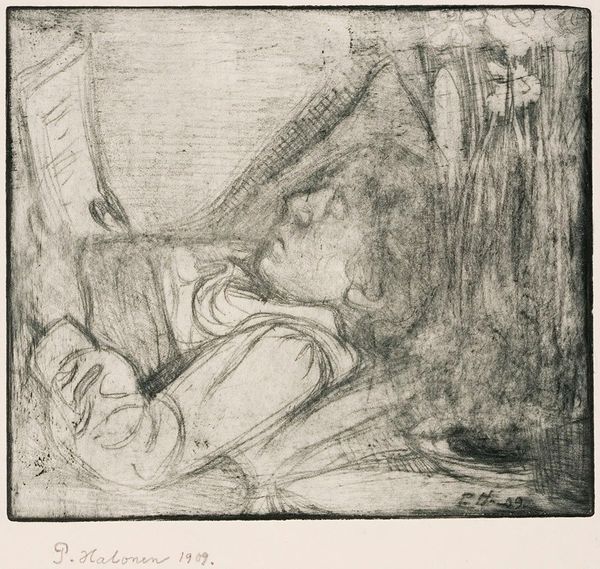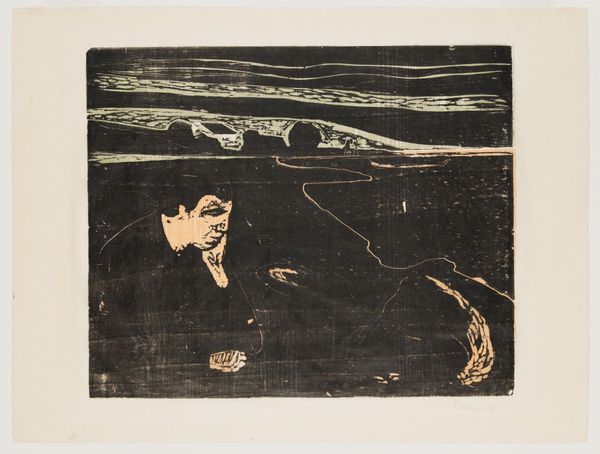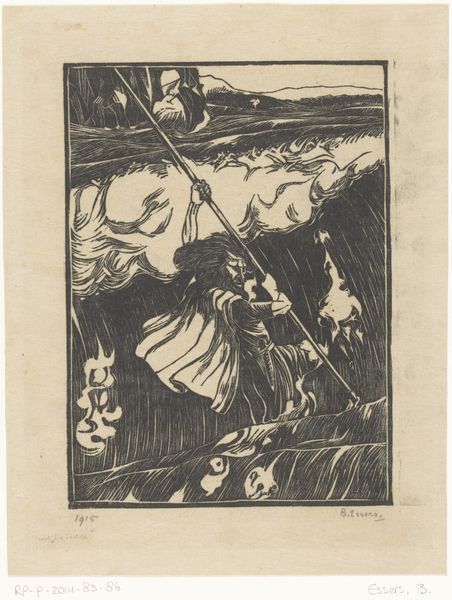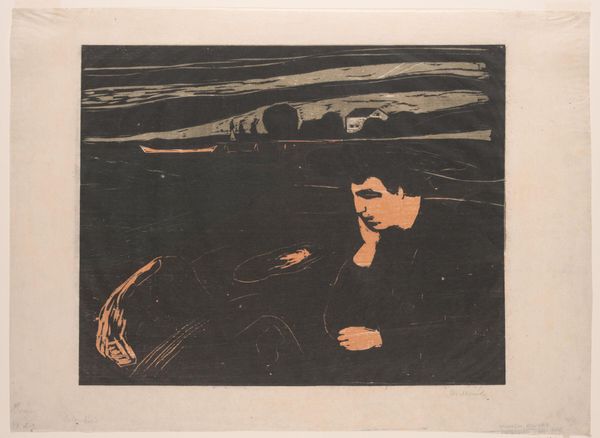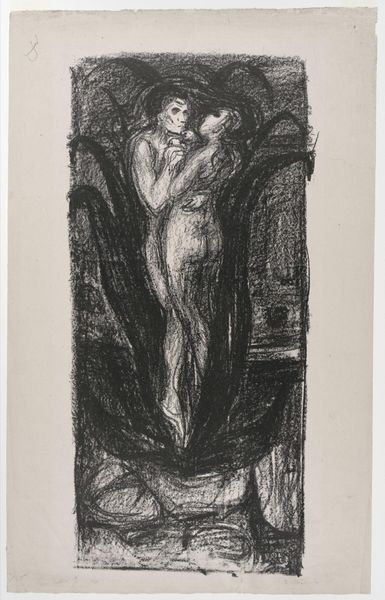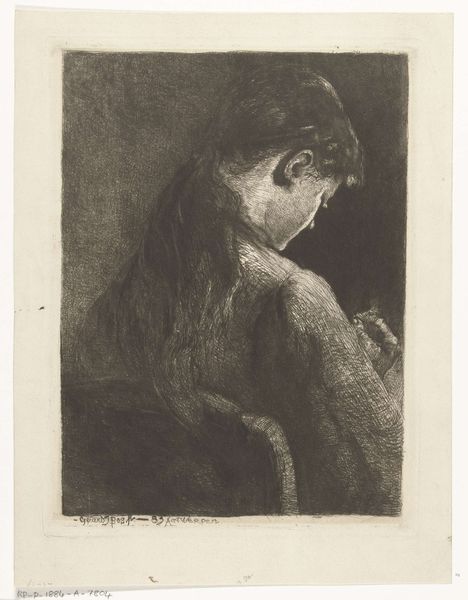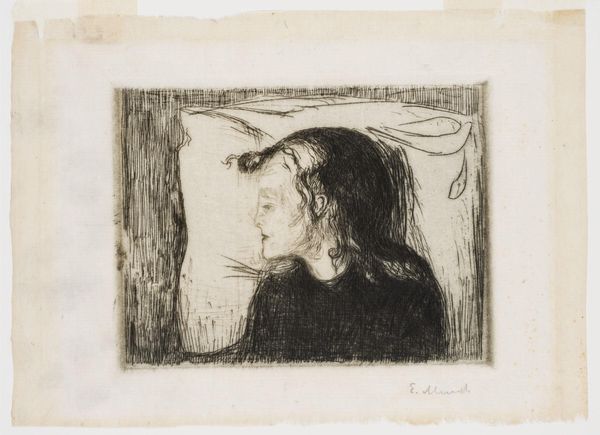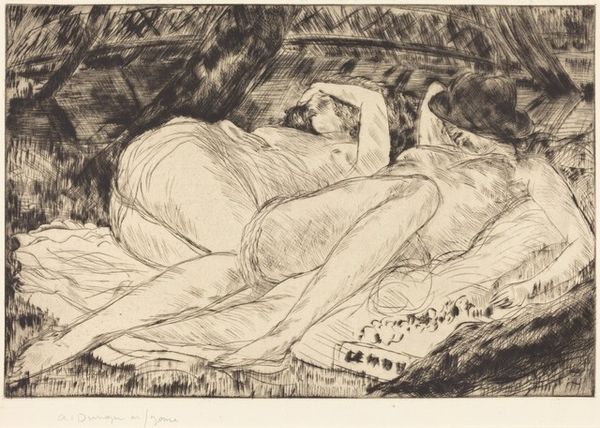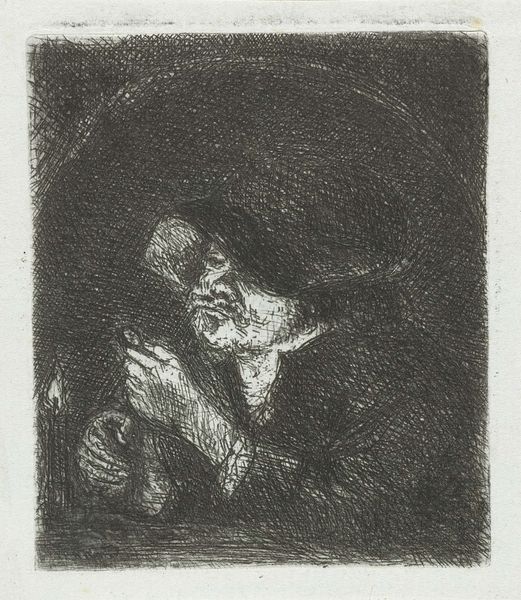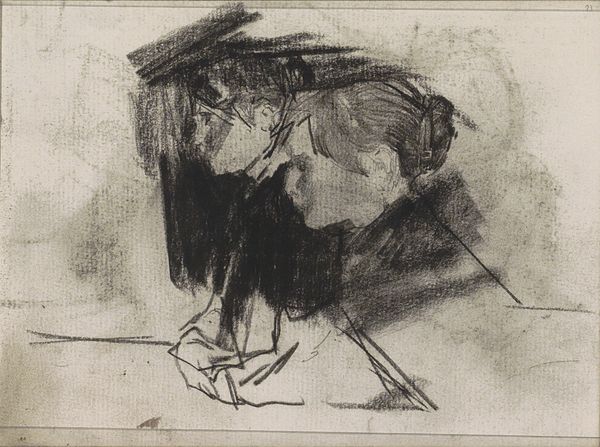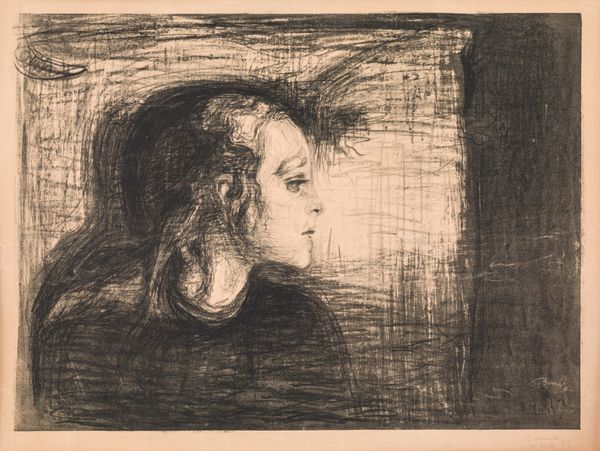
print, etching
# print
#
etching
#
figuration
#
line
#
symbolism
Dimensions: 16 7/16 x 25 5/16 in. (41.75 x 64.29 cm) (image)22 5/8 x 31 3/4 in. (57.47 x 80.65 cm) (sheet)
Copyright: No Copyright - United States
Curator: This print, hanging here at the Minneapolis Institute of Art, is Edvard Munch's "Separation II", likely created sometime between 1896 and 1906. He used etching techniques to realize it. Editor: It's striking how the bold lines emphasize a sense of estrangement, really setting a melancholy tone. Look at how the composition literally keeps the figures apart! Curator: Indeed. That compositional choice directly supports the emotional weight carried by symbolism present within. Munch frequently wrestled with themes of alienation and existential angst, so this imagery reflects his own life. Editor: Absolutely. The style of the figures – their downcast eyes, their inability to make eye contact with each other or the viewer - telegraphs isolation. Munch's prints gained traction as venues expanded. This proliferation democratized access. Prints such as "Separation II" moved easily through urban markets, and facilitated dialogues about complex issues related to identity. Curator: The flowing lines act almost like visual connectors, but that river of lines almost looks like a severing current separating these two protagonists. What I also admire, if you observe, is the very conscious manipulation of light and shadow, contributing a lot to the mood of profound sadness. Editor: Yes, there's this stark tonal contrast where the male figure exists within shadows of despair while, conversely, the woman has far less weight to overcome since she's been given luminosity in a landscape setting. It reveals this very imbalanced gender-normative perspective. Curator: Well observed. Ultimately, "Separation II" offers a window into Munch’s explorations of very raw and painful emotional territory. Editor: A landscape that remains universally recognizable, I think. Even today. The tension of alienation persists within our modern relationships, which highlights that this particular work continues its resonance long past its creation.
Comments
No comments
Be the first to comment and join the conversation on the ultimate creative platform.


